What is Kitchen Safety?
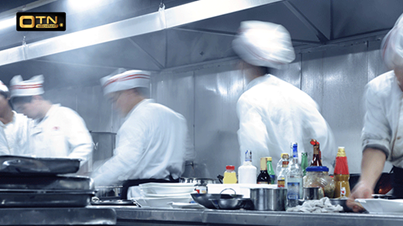
Commercial kitchens are usually busy during operating hours and are prone to accidents or injuries. Kitchen safety ensures that you and your staff have a safe kitchen to work. It includes industry best practices like taking precautions and reducing potential kitchen safety hazards.
This blog discusses 5 kitchen safety rules for using equipment. It provides kitchen equipment safety tips to prevent physical injury or property damage at work.
4 Types of Workplace Injuries
- Cuts: Cuts may occur using knives, sharp bladed equipment, and other sharp tools during food handling.
- Burns: Burns can result from accidentally touching an open flame or mishandling hot food, liquids, pots or heating equipment like stoves, deep fat fryers and ovens.
- Falls: Falls usually happen due to spills on the floor.
- Sprains: Sprains may happen while moving heavy items or washing up.
1. Fire Safety
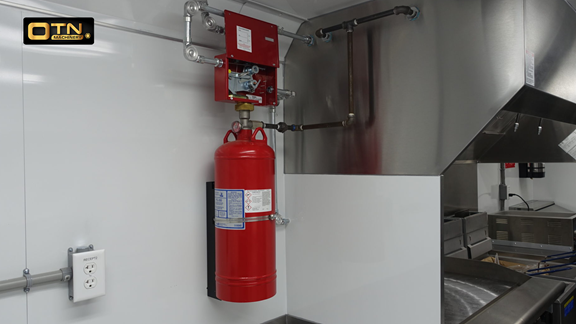
Place fire extinguishers in a visible place
According to Malaysia’s fire safety regulations for commercial kitchens, all commercial kitchens must have a kitchen fire suppression system compliant with the Malaysian Standard (MS) 1497.
Keep fire extinguishers near the kitchen entrance or cooking stations. They should not obstruct your way out and should be visible to everyone.
You may need different types of fire extinguishers for your commercial kitchen:
- Dry powder fire extinguisher to put out most types of fires in commercial buildings (electrical fires and flammable liquids)
- Wet chemical fire extinguishers to put out cooking fires caused by fats and oils.
Fire safety training
Schedule fire safety training for your employees. This training teaches them how to use a fire extinguisher and other fire extinguishing devices, like a fire blanket and a sand bucket.
Don’t leave equipment on overnight
Switch off equipment when not in use. Avoid leaving them on standby overnight.
Some types of smart kitchen equipment have automated power-off functions that activate when the equipment is left on standby for too long. Check with your equipment retailer or supplier for more information.
Don’t leave cooking equipment unattended
According to the Malaysian Fire Protection Association (MFPA) unattended cooking is the leading cause of kitchen fires in Malaysia. Cooking equipment includes stovetops, ovens, and deep fryers.
If you need to attend to something else like food preparation while cooking, use a timer to remind yourself.
Never use metal items in toasters and microwaves
Toaster: Do not use metal utensils to remove bread or food particles from a toaster, as you may get electrocuted. Use wooden tools instead.
Microwave: Do not place cutlery or tinfoil in the microwave, as they will catch fire. Use microwave-safe containers instead.
Learn how to put out small grease or oven fires
Small grease fire: The MFPA recommends putting out small grease fires by covering the pot or pan with a lid. Switch off the fire and leave the lid on until the pot or pan cools. Do not pour water on a grease fire, it can worsen the fire.
Oven fire: The MFPA recommends switching off the oven and closing the oven door. Wait until it has cooled down.
Keep flammable items away from fire
Store flammable food items like oil and alcohol away from cooking stations and heat sources.
2. Electrical Cord Safety
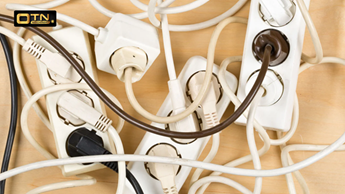
Keep electrical cords away from heat
Electrical cords often have plastic or rubber casings that may melt when exposed to heat in the kitchen. This exposes the wiring underneath, which increases the risk of an electrical fire.
Organise electrical cords properly
Group your cables by equipment type or location. Use wall hooks, twist ties or velcro straps with identification labels to gather and secure them. Try to keep your electrical cords close to the wall, away from high-traffic areas.
You can use fabric cord covers or electrical tape to secure groups of electrical cords to the floor. It prevents tripping and cable damage, especially if your cables run across the kitchen.
Do not use equipment with damaged electrical cords
Do not use electrical equipment with frayed or damaged power cords (including cables with exposed metal wires). Discard and replace them with new ones before using the equipment.
Schedule regular maintenance
Schedule regular preventive and routine maintenance to keep your equipment in good condition and ensure electrical safety in the kitchen. It will prevent last-minute breakdowns and fix issues that could pose a safety hazard.
Ask your equipment supplier or retailer for more information on the type and frequency of professional maintenance you need.
3. Using Tools and Equipment

Cooking safety training
Cooking safety training teaches your staff to use kitchen tools properly, how to keep the kitchen clean, and first-aid techniques. It may also include food safety courses.
Cutting safety
Ensure cutting safety when using a knife. Secure your cutting board on a non-slip surface, like a damp towel. Always cut away from yourself, and never cut food while holding it in your hand.
To ensure food hygiene, wash your hands, wear gloves while chopping food and use separate cutting boards to prevent cross-contamination.
First-aid kit
Keep an easily accessible first-aid kit in the kitchen for injuries. Create a list of safety rules for staff to follow in the event of accidents and injury.
Use protective equipment
Wear oven mitts and protective gloves when handling hot items.
Don’t fill pots and pans to the brim
Don’t fill pots and pans to the brim when boiling or simmering food. Hot cooking oil and water could splash or boil over and injure you.
4. Moving and Carrying Items
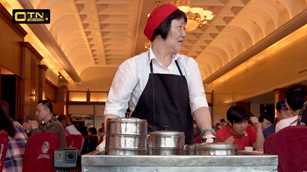
Keep the kitchen clean
Ensure the kitchen is properly lit and ventilated. Clean up spills to prevent slips and falls.
Transport heavy loads safely
If you are transporting heavy loads over long distances, use trolleys.
Don’t bend your back to lift heavy items from the floor. Bend your knees, keep your back straight, and lower yourself to pick the item up.
5. Clothing
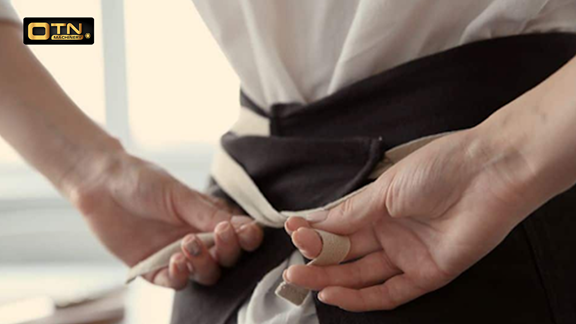
Wear your issued uniform and protective equipment, if any. Protect your hands and feet by wearing gloves and covered shoes.
Keep long hair tied back and out of your face. Ensure all loose clothing strings, belts and sashes are tied up securely.
Conclusion
Studies by OSHA have shown that food businesses can save more money when they invest in kitchen safety programmes for staff. By investing in safety precautions, you grow your profits, cut costs, and ensure employee well-being. These 5 kitchen safety tips will help create a safe and clean working environment.
OTN Machinery Sdn Bhd is Malaysia’s biggest kitchen equipment supplier. With 25+ years of experience helping food businesses in Malaysia and overseas, our equipment is compliant with local safety regulations and maintenance standards.







 Philippines
Philippines